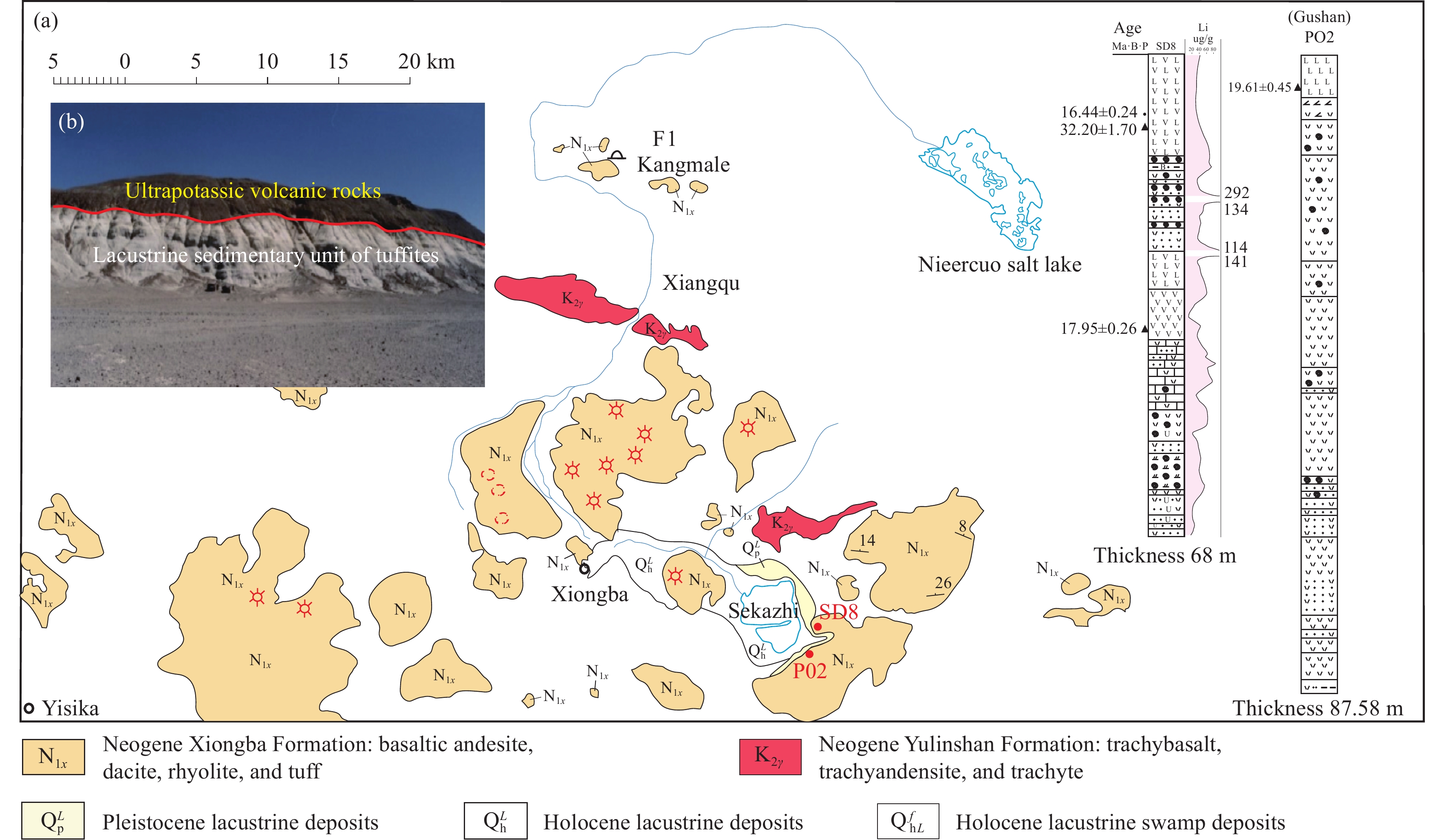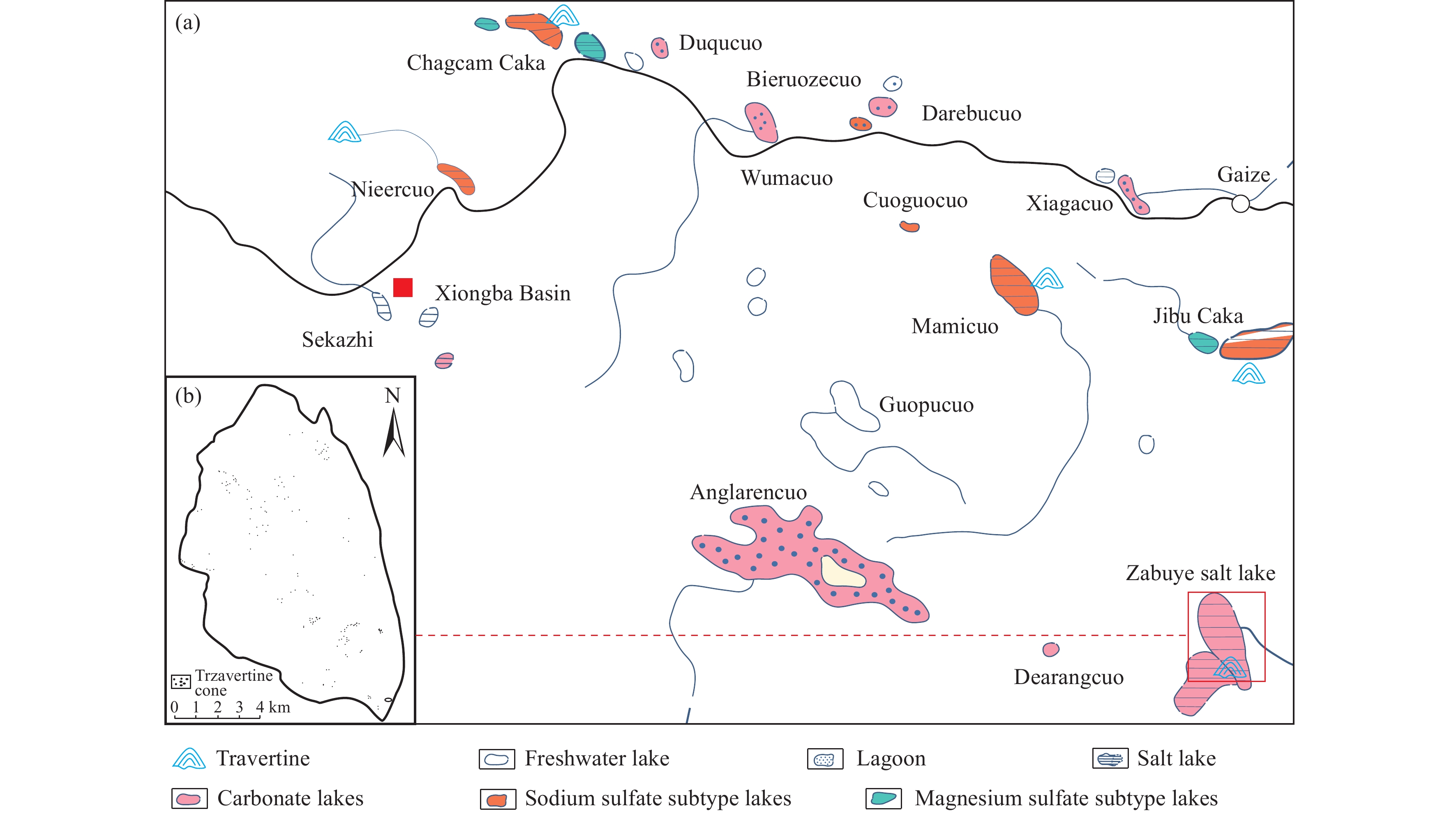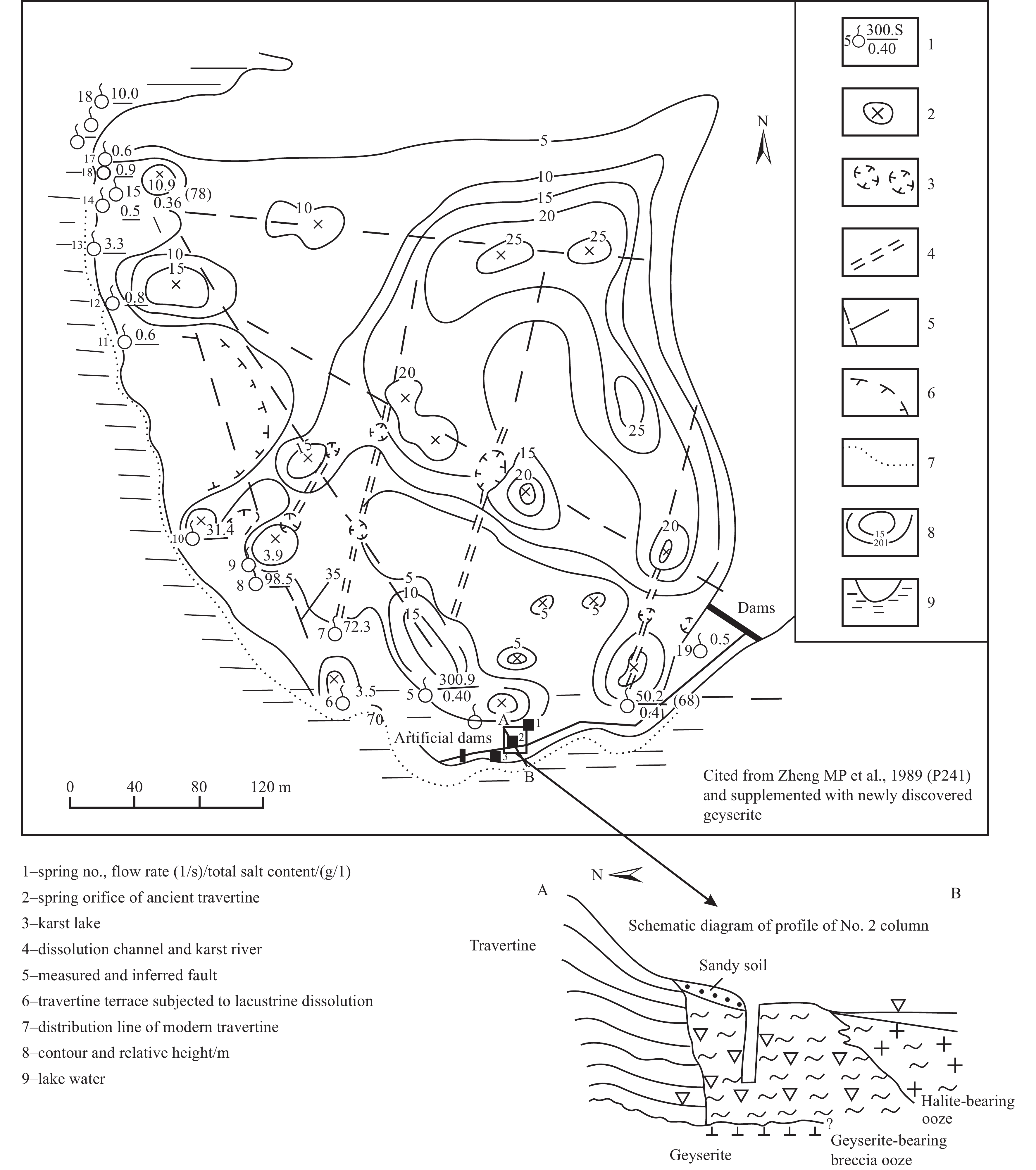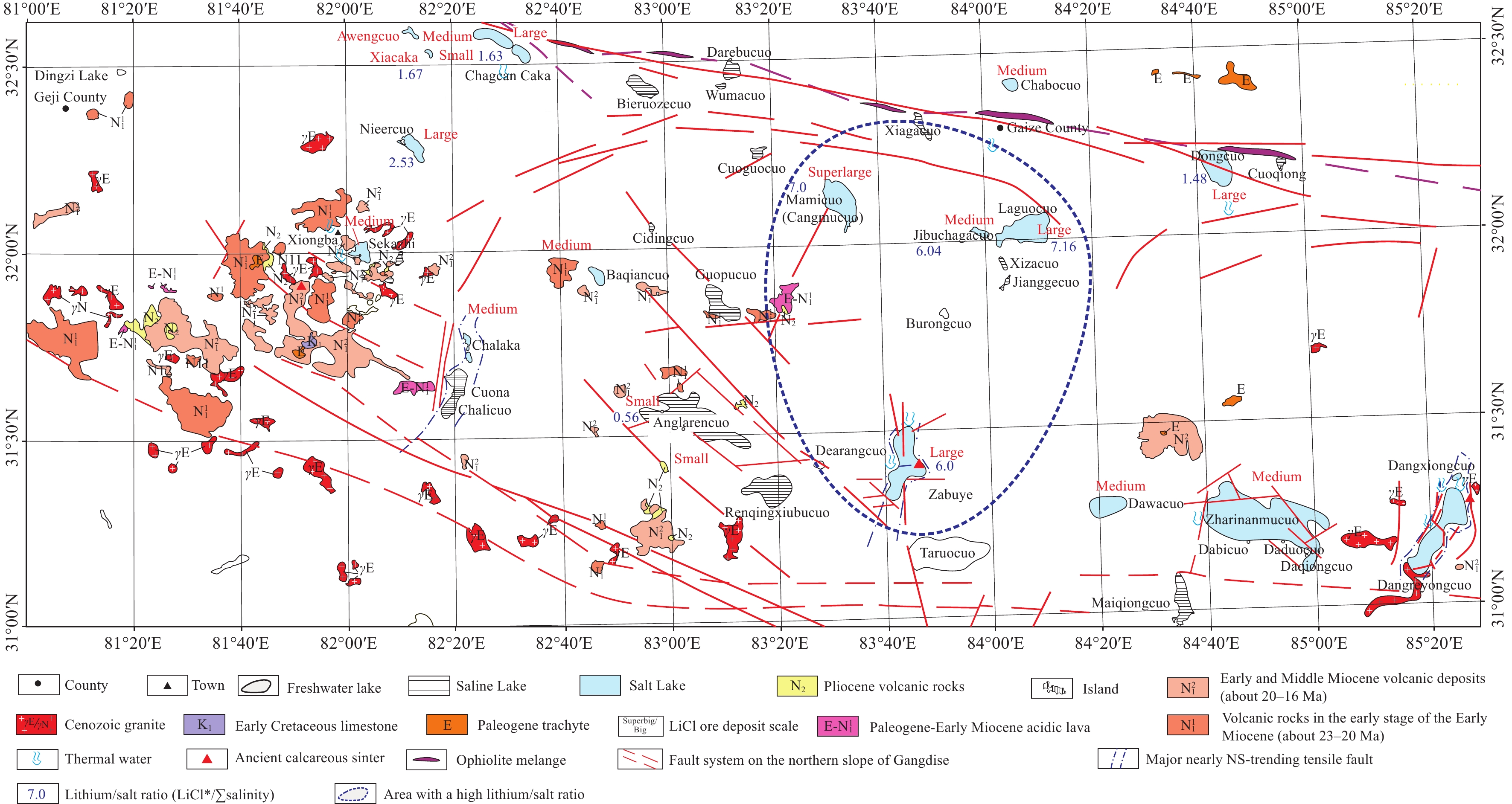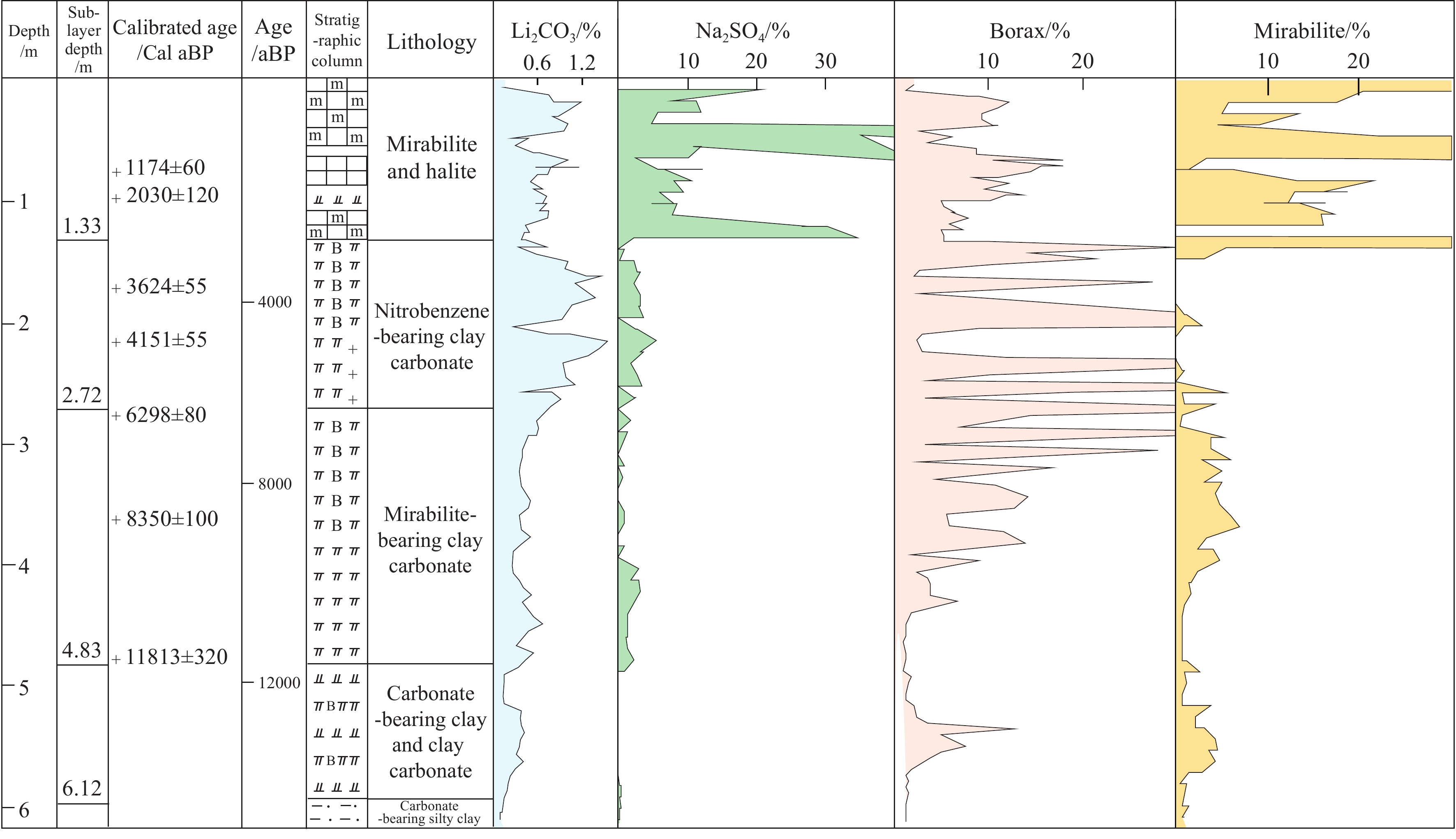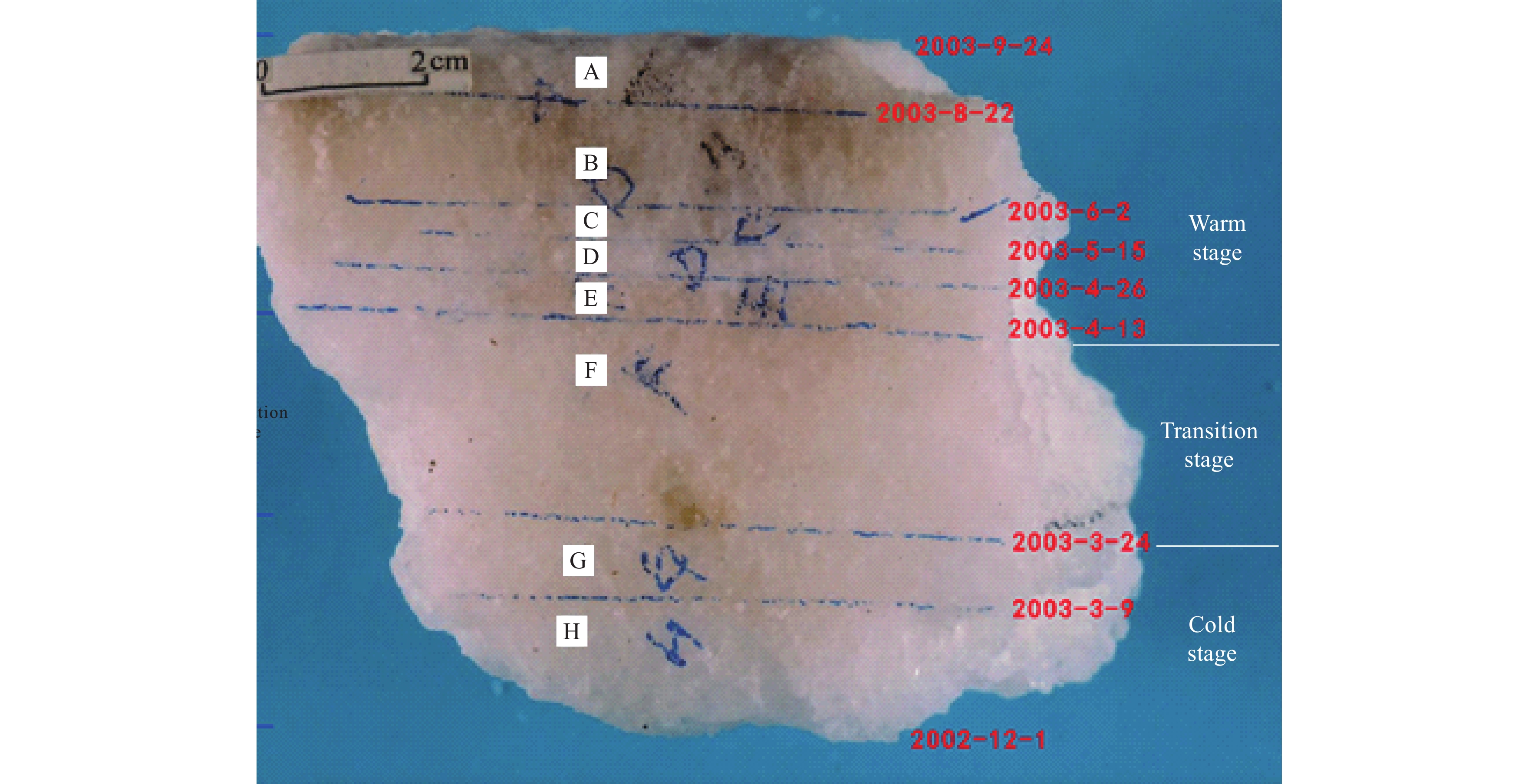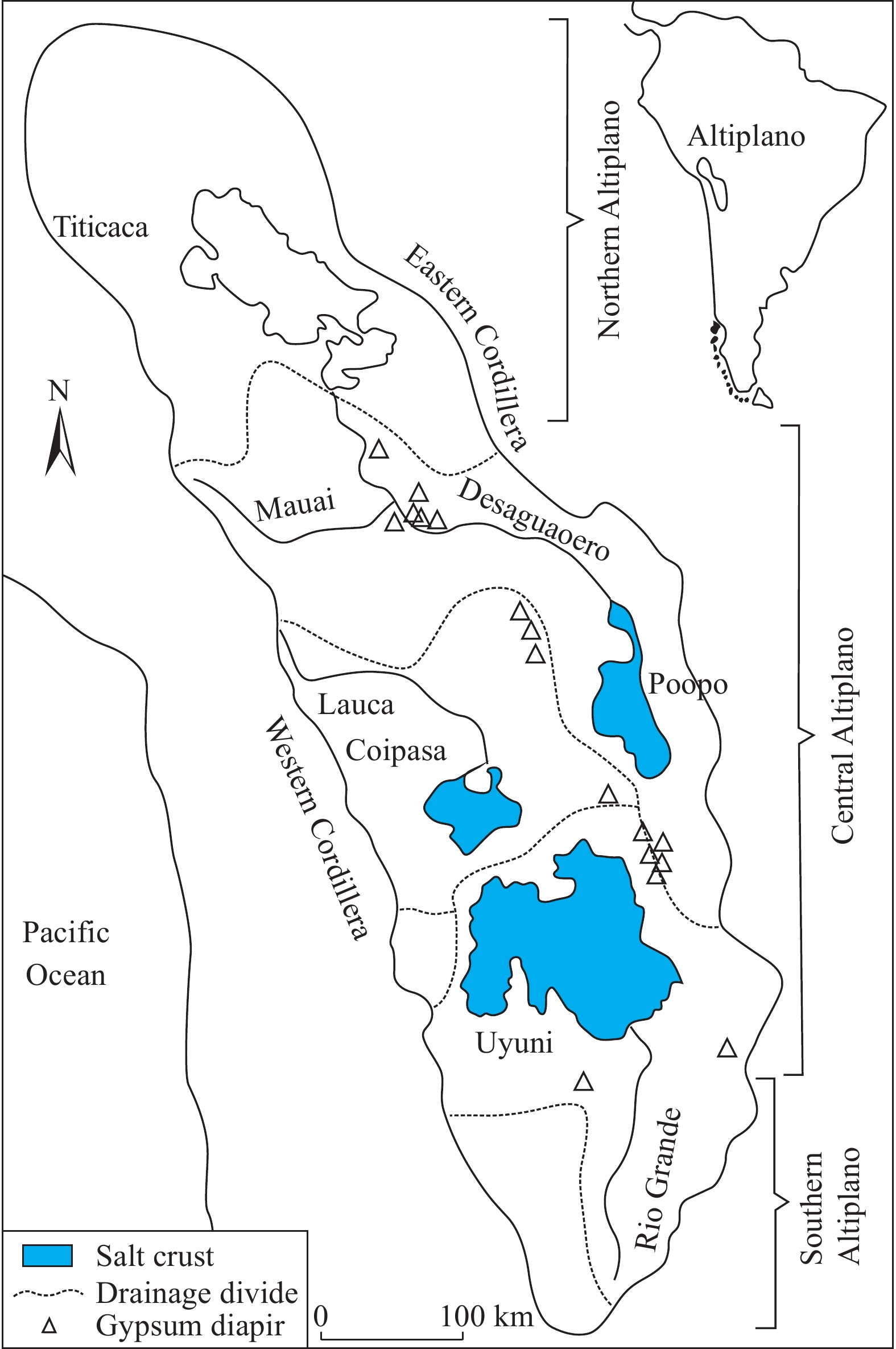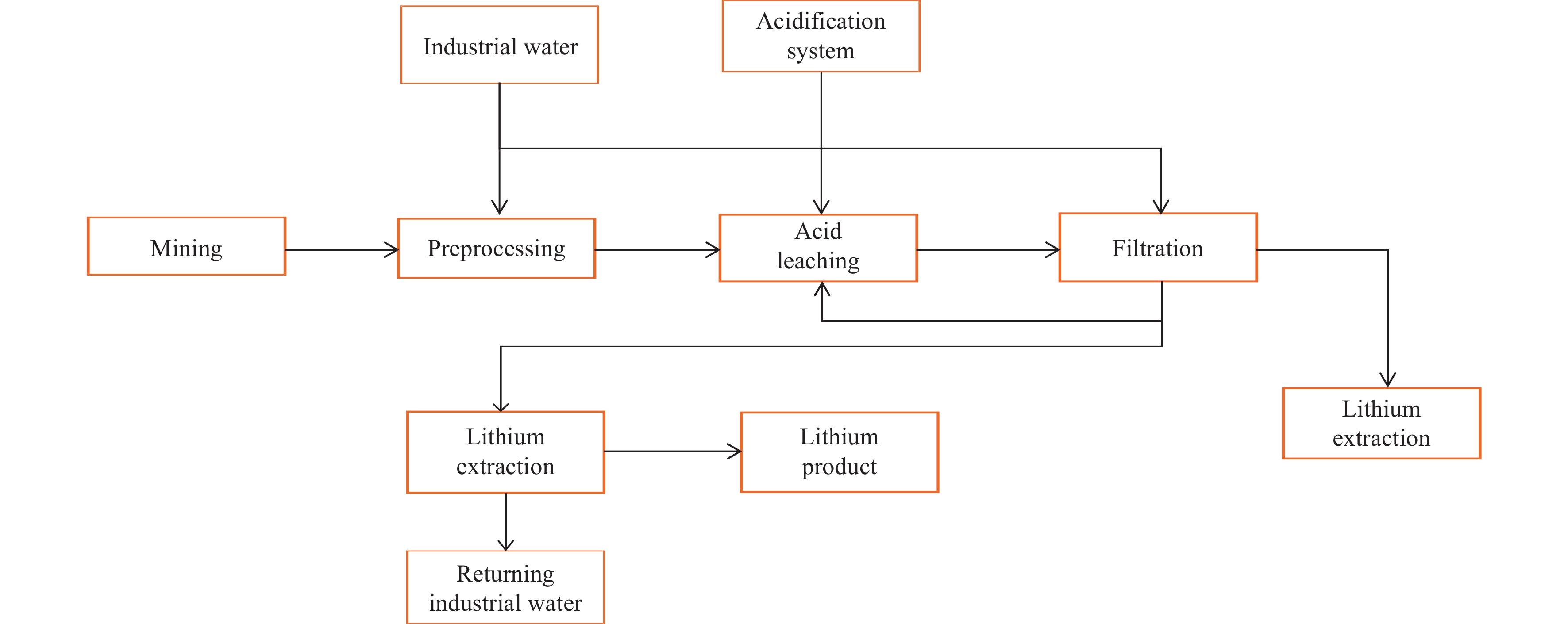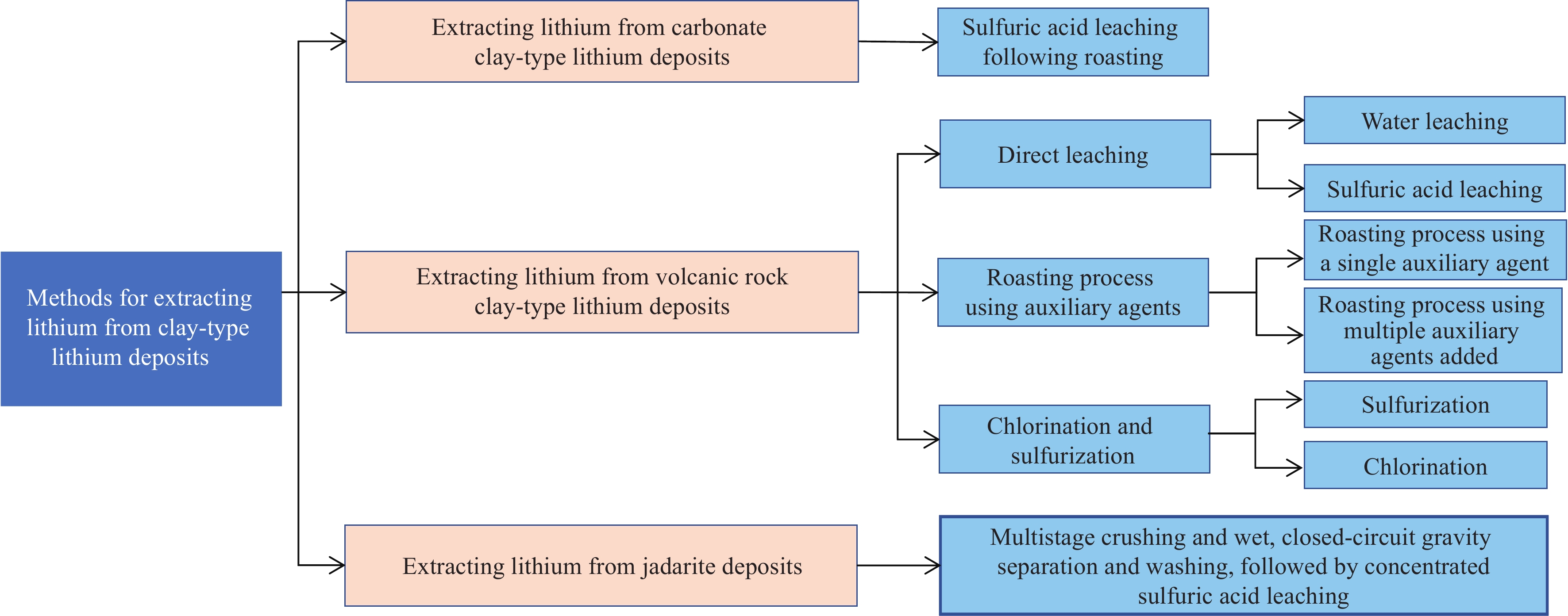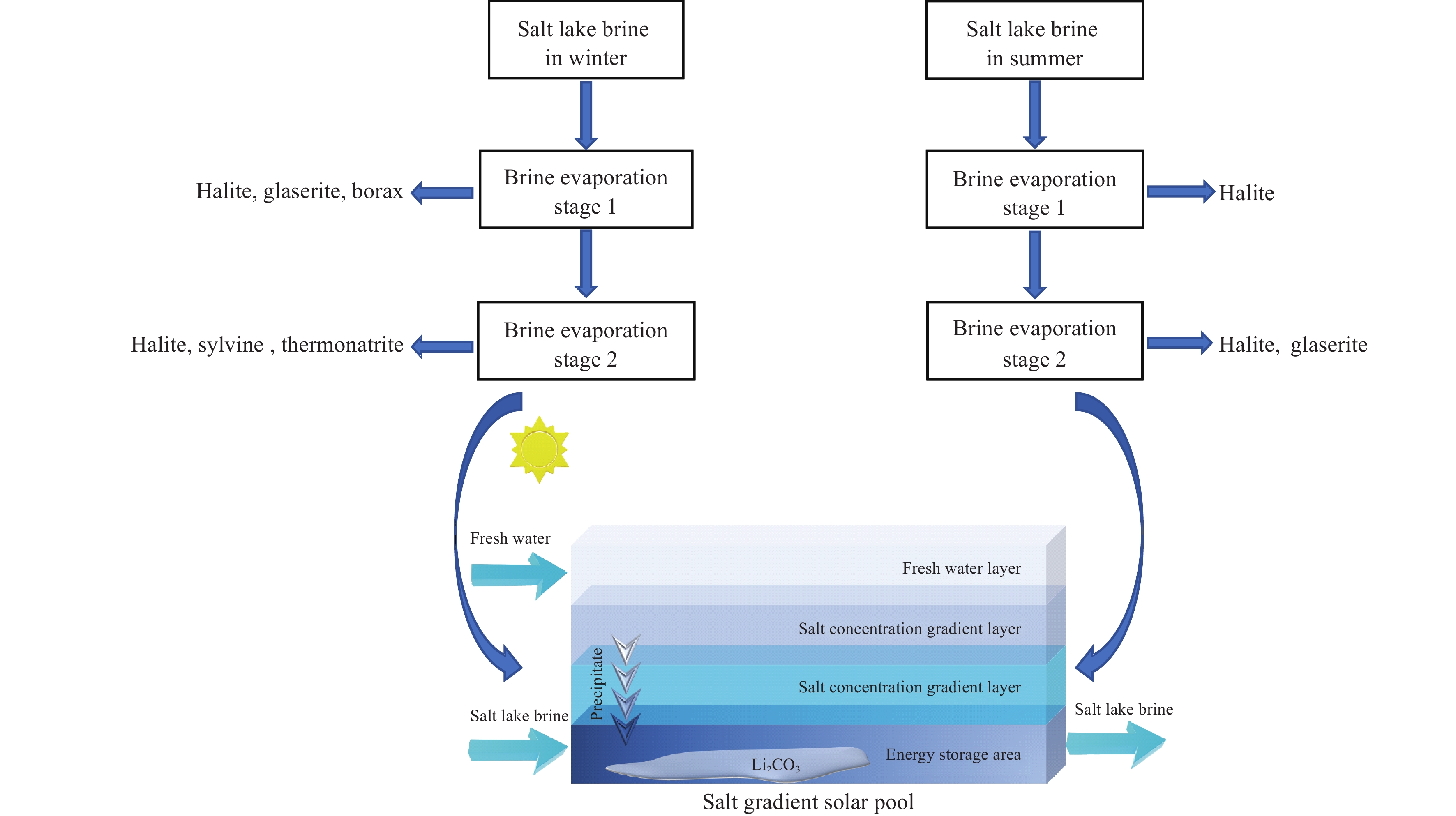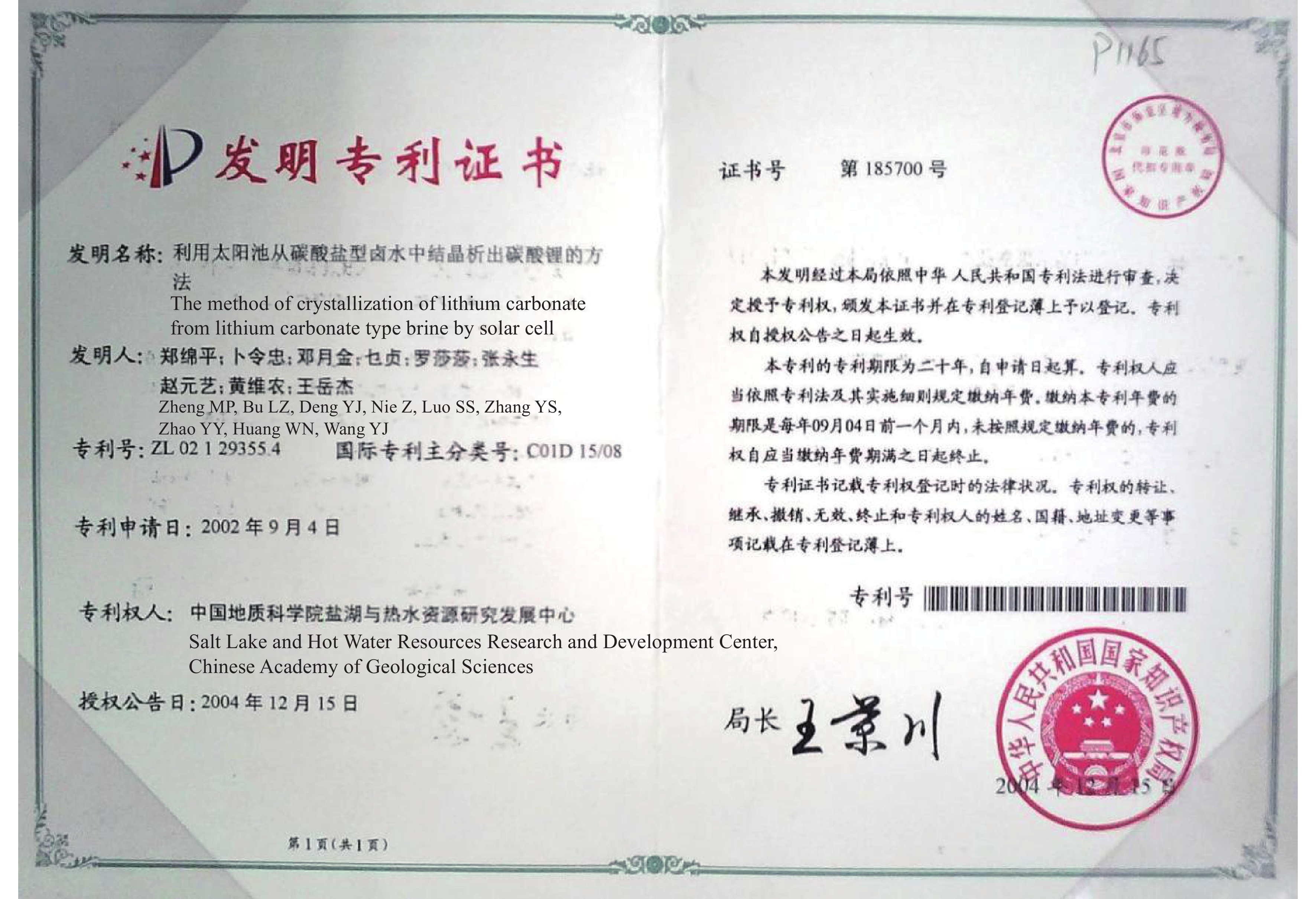| Citation: | Mian-ping Zheng, En-yuan Xing, Xue-fei Zhang, Ming-ming Li, Dong Che, Ling-zhong Bu, Jia-huan Han, Chuan-yong Ye, 2023. Classification and mineralization of global lithium deposits and lithium extraction technologies for exogenetic lithium deposits, China Geology, 6, 547-566. doi: 10.31035/cg2023061 |
Classification and mineralization of global lithium deposits and lithium extraction technologies for exogenetic lithium deposits
-
Abstract
A reasonable classification of deposits holds great significance for identifying prospecting targets and deploying exploration. The world’s keen demand for lithium resources has expedited the discovery of numerous novel lithium resources. Given the presence of varied classification criteria for lithium resources presently, this study further ascertained and classified the lithium resources according to their occurrence modes, obtaining 10 types and 5 subtypes of lithium deposits (resources) based on endogenetic and exogenetic factors. As indicated by surveys of Cenozoic exogenetic lithium deposits in China and abroad, the formation and distribution of the deposits are primarily determined by plate collision zones, their primary material sources are linked to the anatectic magmas in the deep oceanic crust, and they were formed primarily during the Miocene and Late Paleogene. The researchers ascertained that these deposits, especially those of the salt lake, geothermal, and volcanic deposit types, are formed by unique slightly acidic magmas, tend to migrate and accumulate toward low-lying areas, and display supernormal enrichment. However, the material sources of lithium deposits (resources) of the Neopaleozoic clay subtype and the deep brine type are yet to be further identified. Given the various types and complex origins of lithium deposits (resources), which were formed due to the interactions of multiple spheres, it is recommended that the mineralization of exogenetic lithium deposits (resources) be investigated by integrating tectono-geochemistry, paleoatmospheric circulation, and salinology. So far, industrialized lithium extraction is primarily achieved in lithium deposits of the salt lake, clay, and hard rock types. The lithium extraction employs different processes, with lithium extraction from salt lake-type lithium deposits proving the most energy-saving and cost-effective.
-
Keywords:
- Exogenetic lithium deposit /
- Endogenetic lithium deposit /
- Deposit type /
- Salt lake type /
- Deep brine type /
- Geothermal type /
- Volcanic deposit type /
- Clay type /
- Supernormal supergene enrichment /
- SGSP lithium extraction techology /
- Invention patent /
- Mineral resource exploration engineering
-

-
References
AGU Fall Meeting 2018. V14B: Lithium Resources in Continental Brines, Pegmatites, and Lacustrine Sediments. https://agu.confex.com/agu/fm18/meetingapp.cgi/Session/51511. Arne SK, Johan WS. 1941. Method of recovering lithium salts from lithium-containing minerals: US24041638A. 1941-01-28. Barbosa LI, González JA, Ruiz MDC. 2015. Extraction of lithium from β-spodumene using chlorination roasting with calcium chloride. Thermochimica Acta, 605, 63–67. doi: 10.1016/j.tca.2015.02.009. Barbosa LI, Valente G, Orosco RP. 2014. Lithium extraction from beta-spodumene through chlorination with chlorine gas. Minerals Engineering, 56, 29–34. doi: 10.1016/j.mineng.2013.10.026. Barbosa LI, Valente NG, González JA. 2013. Kinetic study on the chlorination of β-spodumene for lithium extraction with Cl2 gas. Thermochimica Acta, 557, 61–67. doi: 10.1016/j.tca.2013.01.033. Benson TR, Coble MA, Dilles JH. 2023. Hydrothermal enrichment of lithium in intracaldera illite-bearing claystones. Science Advances, 9(35), eadh8183. doi: 10.1126/sciadv.adh8183. Benson TR, Coble MA, Rytuba JJ, Gail AM. 2017. Lithium enrichment in intracontinental rhyolite magmas leads to Li deposits in caldera basins. Nature Communications, 8(1), 270. doi: 10.1038/s41467-017-00234-y. Bradley DC, Mccauley AD, Stillings LL. 2017. Mineral-deposit model for lithium cesium tantalum pegmatites: U. S. Geological Survey Scientific Investigations Report 2010-5070-O, 1‒48. doi: 10.3133/SIR20105070O. Bradley DC, Stillings LL, Jaskula BW, Munk, LA, McCauley AD. 2017. Lithium, chap. K . In: Schulz KJ, DeYoung JH, Seal RR, Bradley DC (eds.), Critical mineral resources of the United States-Economic and environmental geology and prospects for future supply: U. S. Geological Survey Professional Paper 1802, K1–K21. doi: 10.3133/pp1802K. Chen P and Chai DH. 1997. Sedimentary Geochemistry of Carboniferous Bauxite Deposite in Shanxi. Taiyuan: Shanxi Science and Technology Press, 1‒194 (In Chinese with English Abstract). Choubey PK, Kim MS, Srivastava RR, Lee JC. 2016. Advance review on the exploitation of the prominent energy-storage element: lithium (Ⅰ): From mineral and brine resources. Minerals Engineering, 89, 119–137. doi: 10.1016/j.mineng.2016.01.010. Christmann P, Gloaguen E, Labbé JF, Melleton J, Piantone P. 2015. Chapter 1-Global Lithium Resources and Sustainability Issues. In: Chagnes A. , Światowska J (eds.), Lithium Process Chemistry. Elsevier, Amsterdam, 1‒40. doi: 10.1016/B978-0-12-801417-2.00001-3. Davis JR, Vine JD. 1979. Stratigraphic and Tectonic Setting of the Lithium Brine Field, Clayton Valley, Nevada. Rocky Mountain Association of Geologists, 421‒432. Deng FY, Yin TX, Gan WW, He XY. 1999. Comprehensive utilization of potassium, rubidium, and cesium in mother liquor after extracting lithium from lepidoliter. Mining and Metallurgy Engineering, 19(1), 50–52 (in Chinese with English abstract). Ding T, Zheng MP, Peng SP, Lin YH, Zhang XF, Li MM. 2023. Lithium extraction from salt lakes with different hydrochemical types in the Xizang Plateau. Geoscience Frontiers 14, 101485. doi: 10.1016/j.gsf.2022.101485. Ferrell JE. 1985. Lithium. Chapter in Minerals Facts and Problems. United States Bureau of Mine Bulletin 675, 461‒470. Gao TM, Fan N, Chen W, Dai T. 2023. Lithium extraction from hard rock lithium ores (spodumene, lepidolite, zinnwaldite, petalite): Technology, resources, environment and cost. China Geology, 6, 137–153. doi: 10.31035/cg2022088. Garrett DE. 2004. Handbook of Lithium and Natural Calcium Chloride. Oxford: Academic Press, 1‒476. Gruber PW, Medina PA, Keoleian GA. 2011. Global lithium availability: A constraint for electric vehicles? Journal of Industrial Ecology, 15(5), 760‒775. Kesler SE, Gruber PW, Medina PA. 2012. Global lithium resources: relative importance of pegmatite, brine and other deposits. Ore Geology Reviews, 48(5), 55–69. doi: 10.1016/j.oregeorev.2012.05.006. Koltsov V, Novikov PY, Sarychev GA, Tananaev IG. 2016. Experimental investigations during the technology development of sulfuric acid processing of spodumene concentrate. Tsvetnye Metally, (4), 18–22. doi: 10.17580/tsm.2016.04.03. Kunasz IA. 1974. Lithium occurrence in the brines of Clayton Valley Esmeralda County, Nevada. In: Coogan AH (eds). Fourth International Symposium on Salt, Houston, 57–66. Li BY, Jiang DW, Fu X, Wang L, Gao SQ, Fan ZY, Wang KX, Huge JLT. 2018. Geological characteristics and prospecting significance of Weilasituo li polymetallic deposit, Inner Mongolia. Mineral Exploraton, 9(06), 1185–1191 (in Chinese with English abstract). doi: 10.3969/j.issn.1674-7801.2018.06.021. Li JK, Liu XF, Wang DH. 2014. The Metallogenetic Regularity of Lithium Deposit in China. Acta Geologica Sinica, 88(12), 2269–2283 (in Chinese with English abstract). Ling Y, Zheng MP, Sun Q, Dai XQ. 2017. Last deglacial climatic variability in Xizang Plateau as inferred from n-alkanes in a sediment core from Lake Zabuye. Quaternary International, 15‒24. doi: 10.1016/j.quaint.2017.08.030. Liu LJ, Wang DH, Liu XF, Li JK, Dai HZ, Yan WD. 2017. The main types, distribution features and present situation of exploration and development for domestic and foreign lithium mine. Geology in China, 44(2), 263–278 (in Chinese with English abstract). doi: 10.12029/gc20170204. Lowe JJ, Walker MJC. 1984. Reconstructing quaternary environments. London: Longman, 1‒404. Ma ZB, Ma NN, Zhang XF, Wang Y. 2010. 230Th/238U Chronology of Late Pleistocene Lacustrine Depositsin Zabuye Salt Lake, Xizang. Acta Geologica Sinica, 84(11), 1641–1651 (in Chinese with English abstract). doi: 10.19762/j.cnki.dizhixuebao.2010.11.010. Man ZM. 2009. Research on Climate Change during the Historical Period of China, Jinan: Shandong Education Press, 1‒504(in Chinese). Mcquarrie N, Horton BK, Zandt G. 2005. Lithospheric evolution of the Andean fold-thrust belt, Bolivia, and the origin of the central Andean plateau. Tectonophysics, 399(1–4), 15–37. doi: 10.1016/j.tecto.2004.12.013. Meshram P, Pandey BD, Mankhand TR. 2014. Extraction of lithium from primary and secondary sources by pre-treatment, leaching and separation: a comprehensive review. Hydrometallurgy, 150, 192–208. doi: 10.1016/j.hydromet.2014.10.012. ОЗОЛ А А. 1987. Sedimentary and volcanic sedimentary boron deposits. Beijing: Geological Publishing House, 1‒222 (in Chinese, Qin GX and Liu JC translated). Ren FT, Zhang J. 2013. Chemical separation and enrichment of lithium in aluminous rock in central Guizhou. Inorganic Chemicals Industry, 45(3), 19–21 (in Chinese with English abstract). doi: 10.3969/j.issn.1006-4990.2013.03.006. Sarchi C, Lucassen F, Meixner A, Caffe PJ, Becchio R, Kasemann SA. 2023. Lithium enrichment in the Salar de Diablillos, Argentina, and the influence of Cenozoic volcanism in a basin dominated by Paleozoic basement. Miner Deposita, 58, 1351–1370. doi: 10.1007/s00126-023-01181-z. Shu LS, Zhu WB, Xu ZQ. 2021. Geological settings and metallogenic conditions of the granite- type lithium ore deposits in South China. Acta Geologica Sinica, 95(10), 3099–3114 (in Chinese with English abstract). doi: 10.19762/j.cnki.dizhixuebao.2021152. Stanley CJ, Jones GC, Rumsey MS. 2007. Jadarite, LiNaSiB3O7(OH), a new mineral species from the Jadar Basin, Serbia. European Journal of Mineralogy, 19(4), 575–580. doi: 10.1127/0935-1221/2007/0019-1741. Sun HL, Zheng D. 1998. Formation, Evolution and Development of the Qinghai-Xizang Plateau. Guangzhou: Guangdong Science and Technology Press, 1‒350(in Chinese with English abstract). Swain B. 2016. Recovery and recycling of lithium: a review. Separation & Purification Technology, 172, 388–403. doi: 10.1016/j.seppur.2016.08.031. USGS. 2019. Minerals commodity summaries: Lithium. Geological Survey: 1–2. https://pubs.usgs.gov/periodicals/mcs2019/mcs2019-lithium.pdf. USGS. 2020. Minerals commodity summaries: Lithium. Geological Survey: 1–2. https://pubs.usgs.gov/periodicals/mcs2020/mcs2020-lithium.pdf. USGS. 2021. Minerals commodity summaries: Lithium. Geological Survey: 1–2. https://pubs.usgs.gov/periodicals/mcs2021/mcs2021-lithium.pdf. USGS. 2022. Minerals commodity summaries: Lithium. Geological Survey: 1–2. https://pubs.usgs.gov/periodicals/mcs2022/mcs2022-lithium.pdf. USGS. 2023. Minerals commodity summaries: Lithium. Geological Survey: 1–2. https://pubs.usgs.gov/periodicals/mcs2023/mcs2023-lithium.pdf. Vine JD. , Dooley JR. 1980. Where on Earth is all the lithium?; with a section on uranium isotope studies, Open-File Report 80-1234, USGS, 1‒114. doi: 10.3133/ofr801234. Wang CG, Zheng MP. 2019. Hydrochemical Characteristics and Evolution of Hot Fluids in the Gudui Geothermal Field in Comei County, Himalayas. Geothermics, 81(SEP.), 243–258. doi: 10.1016/j.geothermics.2019.05.010. Wang DH, Dai HZ, Liu SB, Li JK, Wang CH, Lou DB, Yang YQ, Li P. 2022. New progress and trend in ten aspects of lithium exploration practice and theoretical research in China in the past decade. Journal of Geomechanics, 28(5), 743–764 (in Chinese with English abstract). doi: 10.12090/j.issn.1006-6616.20222811. Wang DH, Li PG, Qu WJ, Lei ZY, Liao YC. 2013. Discovery and preliminary study of the high tungsten and lithium contents in the Dazhuyuan bauxite deposit, Guizhou, China. Science China:Earth Sciences, 56, 145–152 (in Chinese with English abstract). doi: 10.1007/s11430-012-4504-2. Wang QS, Yuan CH, Xu H. 2015. Analysis of the global lithium resource distribution and potential. China Mining Magazine, 24(02), 10–17 (in Chinese with English abstract). doi: 10.3969/j.issn.1004-4051.2015.02.005. Wu XS, Huang WB, Du XH, Li L. 2014. Study on metallogenic types and models of lithium deposits in the world. Deposit geology, 33(S1), 1197–1198 (in Chinese with English abstract). doi: 10.16111/j.0258-7106.2014.s1.601. Xiao MS, Wang SH, Zhang QF, Zhang JW. 1997. Leaching mechanism of the spodumene sulphuric acid process. Rare Metals, 16(1), 37–45. Xu SS, Song JF, Bi QY, Chen Q, Zhang WM, Qian ZX, Zhang Lei, Xu SA, Tang N, He T. 2021. Extraction of lithium from Chinese salt-lake brines by membranes: Design and practice. Journal of Membrane Science, 635, 119441. doi: 10.1016/j.memsci.2021.119441. Yu F, Wang DH, Yu Y, Liu Z, Gao JQ, Zhong JA, Qin Y. 2019. The Distribution and Exploration Status of Domestic and Foreign Sedimentary-type Lithium Deposits. Rock and Mineral Analysis, 38(3), 354–364 (in Chinese with English abstract). doi: 10.15898/j.cnki.11-2131/td.201901180013. Zhang YL, Chen L, Wang KM, Wang G, Guo XQ, Nie X, Pang XY. 2022. Metallogenic characteristics of sedimentary lithium resources. Mineral Deposits, 41(05), 1073–1092 (in Chinese with English abstract). doi: 10.16111/j.0258-7106.2022.05.012. Zhao L, Wang XB, Dai SF. 2022. Lithium resources in coal-bearing strata; Occurrence, mineralization and resource potential. Journal of China Coal Society, 47(05), 1750–1760 (in Chinese with English abstract). doi: 10.13225/j.cnki.jccs.MJ22.0418. Zhao YY, Fu JJ, Li Y. 2015. Super Large Lithium and Boron Deposit in Jadar Basin, Serbia. Geological Review, 61(01), 34–44 (in Chinese with English abstract). doi: 10.16509/j.georeview.2015.01.001. Zheng MP, Chen WX, Qi W. 2016. New Findings and Perspective Analysis of Prospecting for Volcanic Sedimentary Boron Deposits in the Xizang Plateau. Acta Geoscientica Sinica, 37(4), 407–418 (in Chinese with English abstract). doi: 10.3975/cagsb.2016.04.03. Zheng MP, Liu WG. 1987. A new lithium mineral-Zabuyeite. Geological Review, 79(4), 365–368 (in Chinese with English abstract). Zheng MP, Lü YY. 2018. The 'Nuclear Boron Ore’ Viewed from the Angle of Geochemistry. Acta Geoscientica Sinica, (2), 250–256 (in Chinese with English abstract). doi: 10.3975/cagsb.2018.012301. Zheng MP, Wang QX, Duo J. 1989a. A new type of hydrothermal deposit: cesium‒bearing geyserite in Tibtet. Beijing: Geological Publishing House, 1‒114 (in Chinese with English abstract). Zheng MP, Xiang J, Wei XJ, Zheng Y. 1989b. Saline Lake on the Qinghai-Xizang Plateau. Beijing: Science Press, 1‒431 (In Chinese with English Abstract). Zheng MP, Yuan HR, Liu JY, Li YH, Ma ZB, Sun Q. 2007. Sedimentary characteristics and paleoenvironmental records of Zabuye Salt Lake, Xizang Plateau, since 128 ka BP. Acta Geologica Sinica-English Edition, 81(5), 861–874. doi: 10.1111/j.1755-6724.2007.tb01008.x. Zheng MP, Yuan HR, Zhao XT, Liu XF. 2006. The Quaternary Pan-lake (Overflow) period and Paleoclimate on the Qinghai-Xizang Plateau. Acta Geologica Sinica, 80(2), 169–180 (in Chinese with English abstract). Zheng MP. 1995. A new type of hydrothermal deposit cesium-bearing geyserite in Xizang. Beijing: Geological Publishing House, 1–114 (in Chinese with English abstract). -
Access History

-
Figure 1.
Schematic diagram showing the zonation and distributions of global Cenozoic exogenetic lithium resources (the tectonic setting cited from ОЗОЛ, 1987). 1‒Solid carbonate deposit in the Zabuye Salt Lake; 2‒Brine-type lithium deposit in the Zabuye Salt Lake; 3‒Jadar lithium deposit; 4‒Iranian lithium resources; 5‒Big Sandy lithium resources; 6‒Silver Peak lithium resources; 7‒Northern Clayton lithium resources; 8‒Tonopah lithium resources; 9‒Thacker Pass lithium resources; 10‒Sonora lithium resources; 11‒Falchani lithium resources; 24‒Chagcam Caka Salt Lake in Xizang; 12‒Dangxiongcuo Salt Lake in Xizang; 13‒Qarhan Salt Lake in Qinghai; 14‒East and west Jinaier salt lakes in Qinghai; 15‒Yiliping Salt Lake in Qinghai; 16‒Semi in Xizang; 17‒Death Valley in the U.S.; 18‒Brawley, California, the U.S.; 19‒Salton, California, the U.S.; 20‒Peru salt lake group; 21‒Coipasa Salt Lake, Bolivia; 22‒Uyuni Salt Lake, Bolivia; 23‒Atacama Salt Lake, Chile
-
Figure 2.
Microscopic images of lithium-bearing carbonate minerals at Zabuye. a‒Zabuyelite (Li2CO3);b‒Lithium- bearing dolomite (lithium concentration: 1750×10−6) at Zabuye
-
Figure 3.
Distribution and profiles of volcanic deposits in the Sekazhi area①
-
Figure 4.
Map showing the distribution of travertine in the lithium ore concentration area of the Zabuye Salt Lake a‒ Distribution of travertine cones in the area and different types of salt lakes based on water chemistry; b‒ Distribution of travertine cones in the Zabuye Salt Lake (Zheng MP et al., 1989b).
-
Figure 5.
Map showing the locations of geyserite in the Zabuye travertine island.
-
Figure 6.
Hand specimens of the geyserite in the Zabuye island and their microscopic mineral structures.
-
Figure 7.
Schematic diagram showing salt lake resources in the Qinghai-Xizang Plateau and their distributions (modified from Sun HL and Zheng D, 1998). IYS–Indian River-Yarlung Zangbo Suture; ONS–Bangong Co-Nu River Suture; JS–Jinsha River Suture; AKS–Animaqin-Kulun Suture;
-
Figure 8.
Distribution of lithium-bearing salt lakes on the planation surface in Xizang.
-
Figure 9.
Map showing the distribution of lithium/salt ratios of the lithium ore concentration area in the Zabuye Salt Lake.
-
Figure 10.
Enrichment and mineralization mechanisms of the Zabuye lake chain (red numbers denote the lithium/salt ratios of lake water).
-
Figure 11.
Paleoclimatic records since 128 Ka obtained from borehole SZK02 in the Zabuye Salt Lake, Xizang ( after Zheng MP et al., 2007; Zheng et al., 2007; Ma ZB et al., 2010; Ling Y et al., 2017).
-
Figure 12.
Salt deposits in the salt pan of the Zabuye Salt Lake.
-
Figure 13.
Resources and distribution of major lithium-bearing salt lakes in South America’s Lithium Triangle.
-
Figure 14.
Schematic diagram showing the multistage mineralization of lithium-bearing salt lakes in South America.
-
Figure 15.
Flowchart showing lithium extraction using the acid process.
-
Figure 16.
Processes for extracting lithium from clay-type lithium deposits.
-
Figure 17.
Flow chart showing the lithium extraction using the SGSP process (Ding T et al., 2022).
-
Figure 18.
Patent certificate for the SGSP process and the excellence award certificate of the China Patent Award for the technology.
-
Figure 19.
Industrialization of lithium extraction in the Zabuye Salt Lake, Xizang.

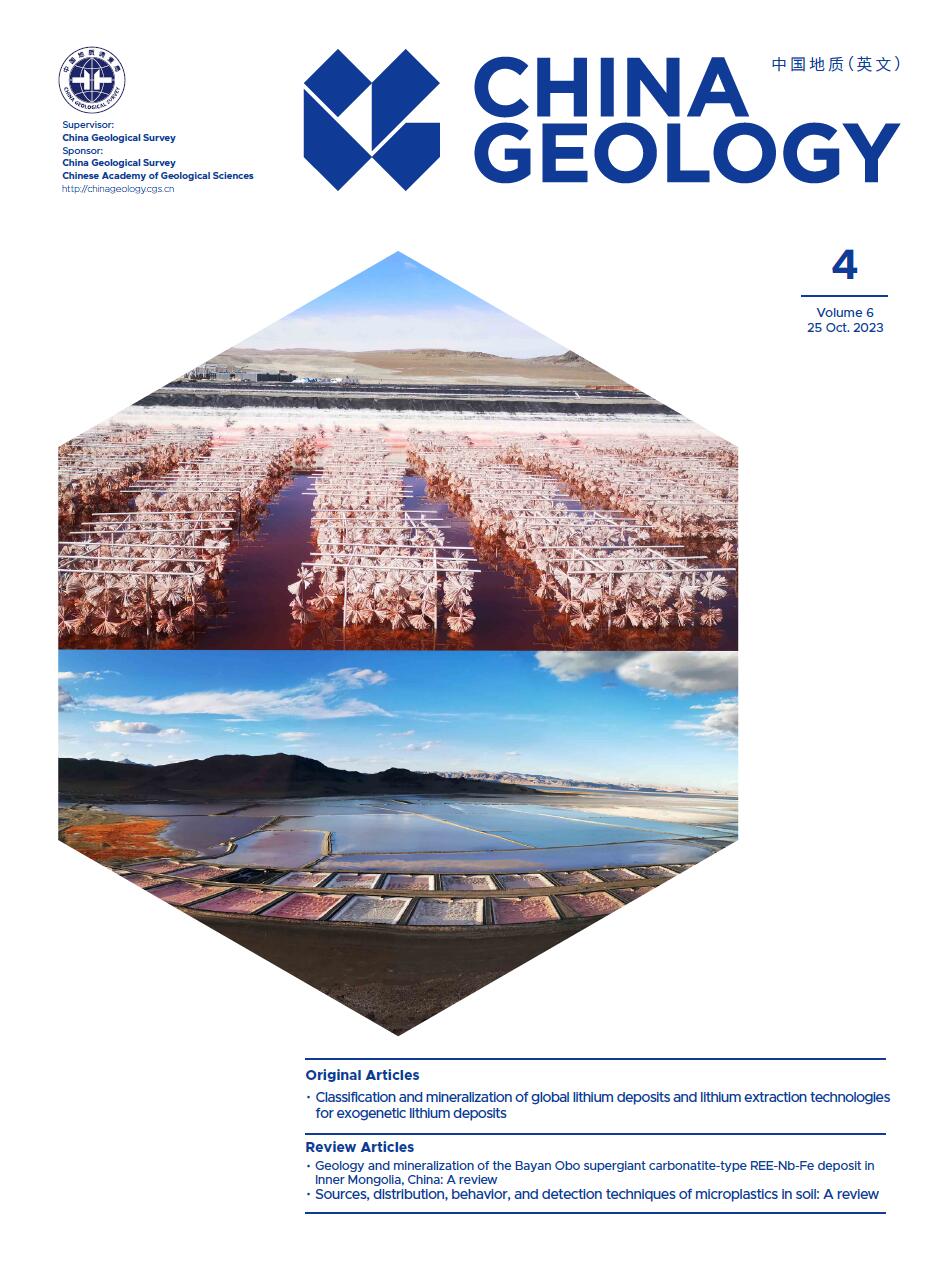



 DownLoad:
DownLoad:

